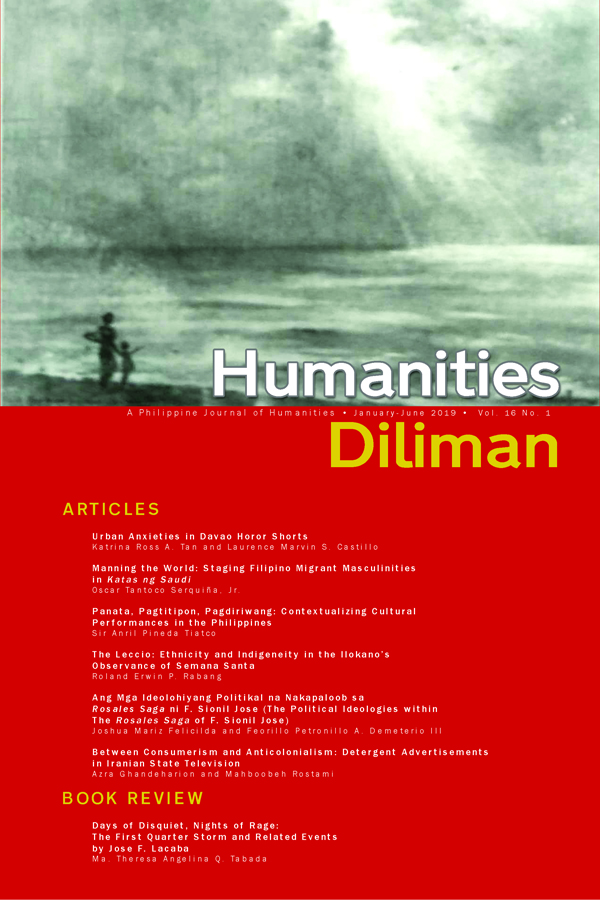The Leccio: Ethnicity and Indigeneity in the Ilokano’s Observance of Semana Santa
Abstract
The leccio is a form of lamentation by Mary, the mother of Jesus based on the suffering and death by crucifixion of Jesus Christ. This lament is likened to the dung-aw, the Ilokano practice of mourning the dead, and usually practiced by older women. It is similar in form to the dung-aw but in delivery, the leccio is performed through a musical structure. Meanwhile, the dung-aw is an actual tearful lamentation, a sentiment uttered by the bereaved and it is a litany of grief, anguish and pain (Anima 1976). If the dung-aw provides the framework for the leccio and the former is regarded as a practice that is rooted in Ilokano culture, then the leccio is just as culturally rooted. Often compared to the pasyon of the Tagalogs, the leccio is, however, markedly different in some key aspects. The pasyon is scripture-based, while the leccio’s scriptural leanings is optional and merely provides a context to a narrative that is based entirely on a mother’s remembrances and pining for a child that she had raised, now deceased. The pasyon is the length of one book and is performed through the night in a pabasa, while the leccio is performed inside of 20 minutes. In terms of mood, the pasyon shifts from a breezy waltz tempo to a sprightly marching rhythm. The leccio, on the other hand, is consistently downcast and melancholic. The leccio and the pasyon are “grounded in local traditions” (Cordero-Fernando 2000), chants whose phrasing dates back to the datus (which) give Lent its unmistakeable, uncanny character. Described by Cordero-Fernando (2000) as “paraliturgy,” the leccio is a local tradition which has a public character, but unlike the Mass, does not form part of the Church’s off icial liturgy.
Keywords: Cultural Studies, ethnic, folk Catholicism, Ilokano, indigenous, oral tradition


